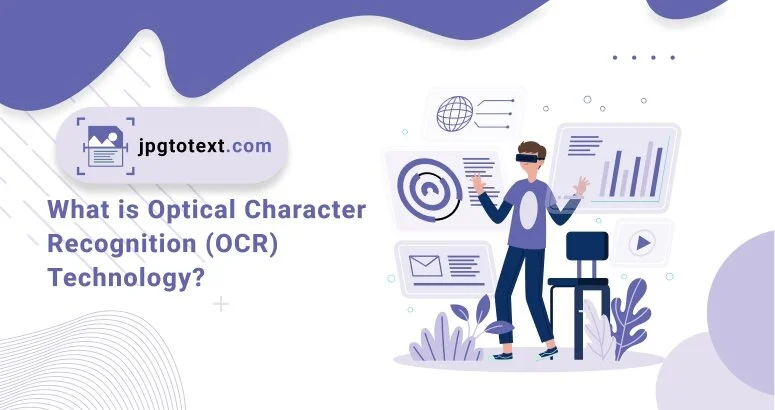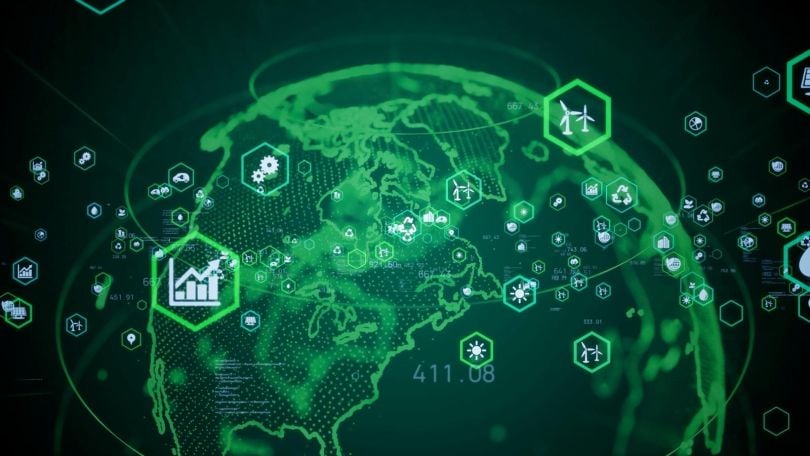In the ever-changing technological landscape, optical character recognition (OCR) stands out as one of the lesser-known heroes, playing a critical role in covering the distance between the physical and digital worlds. The application of optical character recognition (OCR) technology has altered the interactions with printed documents, papers, and handwritten notes.
OCR technology turns an image file into a machine-readable text format. For example, if a person scans an image, the computer saves it as a digital file. Similarly, the OCR technology can convert a physical document in a text format file with its text stored as content data.
Importance of OCR Technology
Businesses receive a lot more information from print media in the form of papers. Invoices, legal contracts, and scanned documents are all part of the business documents. So, it’s difficult for businesses to handle large amounts of papers. On the other hand, paperless data is easy to handle. Here, OCR technology comes into the picture.
The optical character recognition (OCR) technology translates scanned photos, photographs, or printed text into machine-readable text data. This technology essentially functions as a digital translator for physical text, allowing text-based documents to be edited, searched, and stored without the need for manual transcription. OCR systems analyze the shapes and patterns of characters in a picture and then interpret them as alphanumeric characters.
Applications of OCR Technology
OCR is an innovative technology in this digital era. It has many applications in banking, healthcare, and logistics. Following are some of its uses:
Document Digitization
A widely known application of OCR technology is document digitization. Organizations and individuals use OCR to change physical documents, such as books, contracts, invoices, and receipts, into digital formats. This not only enhances accessibility but also allows for more efficient storage and retrieval.
Data Extraction
OCR technology can extract data from documents. For instance, banks and financial institutions use OCR to automatically extract relevant information from invoices and forms, saving time and reducing the need for manual processes.
Accessibility
OCR has transformed accessibility for visually impaired individuals by assisting tools that convert printed materials into text-to-speech formats. This empowers differently-abled people to interact with a variety of textual content.
Searchable Text
Businesses can create a fully searchable information collection by converting current and new documents. They can also employ data analytics technologies to process the text database automatically for extra knowledge processing.
Indexing and Text Search
OCR is important in making scanned or photographed materials searchable. Text can be indexed once it has been recognized and transformed into machine-readable data, allowing users to perform keyword searches inside massive document collections.
Benefits of the OCR System
The OCR system offers numerous benefits in various departments. Some are listed below:
Time Efficiency
OCR saves the time necessary for data entry, transcription, and information extraction greatly. Manual duties that took hours or days to perform can now be completed in minutes or seconds.
Cost Saving
Organizations can save significant amounts of money by streamlining data entry and text recognition, which would otherwise be spent on laborious manual operations.
Searchability
Searching within scanned documents and photographs increases productivity and allows for more effective information extraction.
Accuracy
Modern OCR apps have amazing accuracy rates, especially when it comes to printed texts. This precision reduces errors that can occur during manual transcribing.
Challenges and Limitations
Even though OCR technology provides various benefits, it has certain challenges and limitations, which are discussed below.
Handwriting Recognition
Handwritten text identification remains difficult, especially when dealing with different handwriting styles and writing techniques such as cursive. For this purpose, organizations now use intelligent character recognition (ICR), an advanced form of OCR.
Quality Of Source Material
The level of clarity of the scanned image, for example, can have a substantial impact on OCR accuracy. Poor-quality photos may lead to character misunderstanding.
Layout and Formatting
Complicated layouts, tables, and formatting may cause OCR systems to fail, resulting in problems in text recognition and document structure.
In a nutshell
Optical character recognition is a self-learning technology. Its applications in document digitization, data extraction, language translation, and accessibility have altered businesses and paved the way for new paths of innovation. While problems exist, significant advances in machine learning and artificial intelligence are moving the industry forward.










